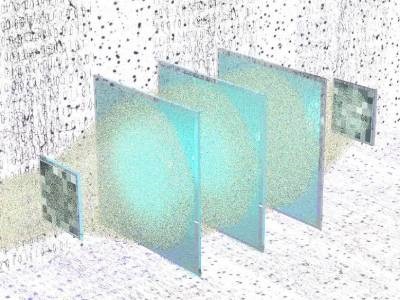
Countless scientific applications and analytical methods utilize the power of computers to quickly and accurately process data through operations such as linear transformations. Demanding high-throughput applications involving large datasets require greater computer power to keep up, which comes with greater costs and also uses a greater amount of energy. Optical computing is a potential alternative to traditional digital computers that could increase speed and conserve energy by using photons instead of electricity to transport information. Researchers at the UCLA Engineering Institute for Technology Advancements have now designed an all-optical processor that can perform a wide range of linear transformations such as the Fourier transform and image permutations.
The all-optical processor consists of spatially-engineered diffractive surfaces that manipulate optical waves as light passes through the system. This system allows computations to be performed at the speed of light and only requires enough energy to power the light source that illuminates the system. The UCLA team found that their deep learning-based design could accurately synthesize any arbitrary linear transformation between an input and output plane; additionally, they found that the accuracy and diffraction efficiency improved as the number of diffractive surfaces increased. This study was published in Light: Science & Applications.
The researchers demonstrated the system’s abilities by performing several linear transformations including randomly generated phase and amplitude transformations, image permutation and filtering operations and the Fourier transform. The authors stated that their optical computing framework could be applied to the development of further all-optical processes using spatially-engineered diffractive surfaces and any part of the electromagnetic spectrum.
Photo: UCLA optical engineers have designed an all-optical computing system that uses spatially-engineered diffractive surfaces to perform linear transformations using photons instead of electricity. Credit: Ozcan Lab, UCLA